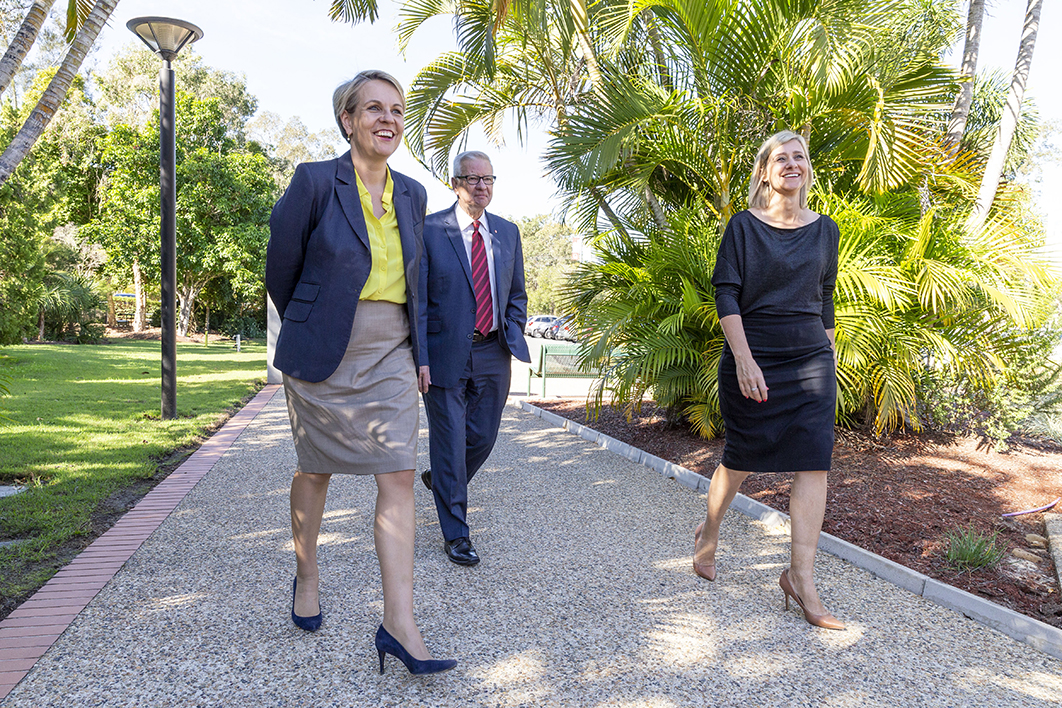If 28 July 2018 were the date of a general election and we were discussing the likely vote in the Queensland electorate of Longman, you could reasonably say that a Coalition win is slightly more likely than not. This judgement would reflect partly the few opinion polls published so far but also the fact that the 2016 result, when Labor’s Susan Lamb defeated the Coalition’s incumbent, Wyatt Roy, was a fluke — almost certainly (though it can’t be proved) a result of One Nation’s how-to-vote cards.
There was more to it than that. Overall, the 2016 result exhibited some of the features of a change-of-government election, in that outer-suburban/semi-rural electorates (a category into which Longman can be squeezed) put in the bulk of the swing to the opposition. Longman’s swing was 7.7 per cent; in Dickson, Peter Dutton weathered a 5.1 per cent shift (the Queensland-wide figure was 2.9 per cent). Down in New South Wales, the once-classic outer-suburban/rural bellwether, Macarthur, swung by 11.6 per cent, far exceeding a state swing of 3.8 per cent.
But One Nation how-to-vote cards got Lamb over the line. If the minor party hadn’t run in Longman, or if its cards had favoured Roy, the Coalition would have retained Longman.
One Nation won’t be repeating the favour, either this month or at the next general election. Instead, it will almost certainly preference the Coalition.
On the other hand, Susan Lamb should benefit from a personal vote, a “sophomore surge.” Unfortunately for Labor, the Coalition candidate, Trevor Ruthenberg, brings his own ready-made partial personal vote from his time in state parliament in an overlapping electorate.
Still, while federal Labor is odds-on to win the next general election, Queensland is likely to underperform (relative to the other states) once again for the opposition. That’s because the state Labor government was returned at last year’s state election, and state governments tend to dampen support for their federal party colleagues.
But what about those Newspoll and Ipsos quarterly polls (a consolidation of three months’ polling) released this week? They had federal Labor ahead after preferences in Queensland over the period from April to June, on 53 and 52 per cent respectively. Well, Queensland has a proud decades-long tradition of performing well for federal Labor in opinion polls between elections, only to collapse as voting day approaches.
So the Coalition is a good chance, slightly better than even, to pick up Longman at the next general election.
But the vote on 28 July is a by-election. By-elections are totally different beasts from general elections. The latter are about the serious question of who will govern the country, the former are elections about… what? In Longman (and Braddon, Mayo and Fremantle) this month, as was the case in New England and Bennelong last year, the sitting MP is recontesting. So Longman (and the other three) will partly be about how people feel about their local member and their having fallen foul of section 44 of the Constitution.
By-elections are unpredictable. Any old issue can grab the heartstrings, particularly in the important final days and hours. But they usually end up, for a sizeable minority of voters at least, as opportunities to deliver a message to the government: don’t take us for granted.
One Nation received 9.4 per cent last time, of which 56.5 per cent flowed to Lamb and 43.5 to Roy. This time, assuming it preferences Ruthenberg, the flow will favour him. The higher One Nation’s support, the better for Ruthenberg, because it will take some votes that otherwise would have gone to Labor and put them on his pile, after preferences.
Opinions about the power of One Nation how-to-vote cards differ because the party’s strength at polling stations (that is, thrusting the bits of paper into voters’ hands) tends to be patchy. But in Longman this month, with no other contests in the state, the minor party’s presence should be substantial. Hanson herself will presumably be doing the rounds.
Overall, the opinion polls so far have Ruthenberg slightly ahead. But what question are respondents answering? A Longman ReachTEL survey in May asked about a general election, which is of next to no use for this exercise. Even with the correct wording, referencing a by-election, it is likely that many respondents haven’t truly focused on what that means, at least until recently.
A by-election, an election about little, and a chance to deliver a bloody nose. Whose nose? The government’s, of course.
The opinion polls in the coming weeks will tell us much, much more than the ones we’ve already seen. The likely outcomes lie somewhere in the range between an easy Labor victory and a close LNP win. In the case of the latter, Ruthenberg will probably have One Nation how-to-vote cards to thank. ●





